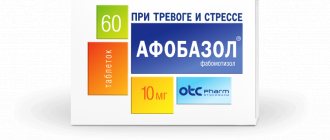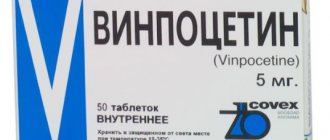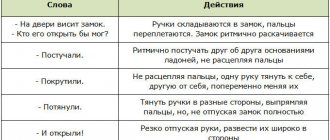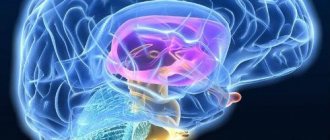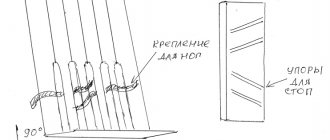pharmachologic effect
An antihypoxic agent that has three types of effects: metabolic, neuroprotective and microcirculatory.
Actovegin increases the absorption and utilization of oxygen; The phospho-oligosaccharides contained in the drug inositol have a positive effect on the transport and utilization of glucose, which leads to an improvement in the energy metabolism of cells and a decrease in the formation of lactate under ischemic conditions. Several ways to implement the neuroprotective mechanism of action of the drug are being considered.
Actovegin prevents the development of apoptosis induced by beta-amyloid (Aβ25-35).
Actovegin modulates the activity of nuclear factor kappa B (NF-kB), which plays an important role in the regulation of apoptosis and inflammation in the central and peripheral nervous system.
Another mechanism of action involves the nuclear enzyme poly(ADP-ribose) polymerase (PARP). PARP plays an important role in the detection and repair of single-stranded DNA damage, but excessive activation of the enzyme can trigger cell death in conditions such as cerebrovascular disease and diabetic polyneuropathy. Actovegin inhibits PARP activity, which leads to functional and morphological improvement in the central and peripheral nervous system.
The positive effects of the drug Actovegin, affecting the processes of microcirculation and the endothelium, are an increase in the speed of capillary blood flow, a decrease in the pericapillary zone, a decrease in the myogenic tone of precapillary arterioles and capillary sphincters, a decrease in the degree of arteriovenular shunt blood flow with preferential blood circulation in the capillary bed and stimulation of the function of endothelial nitric oxide synthase , affecting the microvasculature.
In the course of various studies, it was found that the effect of the drug Actovegin occurs no later than 30 minutes after taking it. The maximum effect is observed 3 hours after parenteral and 2-6 hours after oral administration.
The principle of action of the drugs
Cortexin includes soluble neuropeptides that quickly act on the central nervous and circulatory systems. The medication regulates brain neurotrophic factors, as well as the normal ratio of amino acids in the brain.
Cortexin is characterized by the following properties:
- antioxidant;
- neuroprotective;
- nootropic.
Mechanism of action
It increases the intensity of metabolism of neurons in the central nervous system and PNS, stimulates reparative processes in the central nervous system, and improves the functional state of the cerebral cortex. It has a beneficial effect on the somatic and vegetative systems.
Actovegin is a universal metabolic stimulant. Provides improved tissue nutrition and oxygen saturation. Promotes the production of ATP, which is responsible for the normal functioning of all systems in the body.
With local action, under the influence of a healing substance, wounds heal faster, and the scar remains barely noticeable. Tissue respiration processes are activated. Oxygen is distributed throughout the body evenly.
The formation of collagen fibers improves, as well as the growth, division and distribution of cells. The medicine improves energy exchange in the brain, meets its glucose needs, and normalizes the functioning of the central nervous system.
Dosage
The drug is taken orally before meals. Do not chew the tablet, take it with a small amount of liquid.
In the acute period of ischemic stroke (starting from days 5-7) - 2000 mg/day intravenously, up to 20 infusions, switching to tablet form, 2 tablets. 3 times/day (1200 mg/day). The total duration of treatment is 6 months.
For dementia - 2 tablets. 3 times/day (1200 mg/day). The total duration of treatment is 20 weeks.
For peripheral circulation disorders and their consequences - 1-2 tablets. 3 times/day (600-1200 mg/day). Duration of treatment is from 4 to 6 weeks.
For diabetic polyneuropathy - 2000 mg/day IV drip, 20 infusions with switching to tablet form, 3 tablets. 3 times/day (1800 mg/day). Duration of treatment is from 4 to 5 months.
What is the difference and similarity between Actovegin and Cortexin?
Actovegin is made from the blood of a young calf. To produce Cortexin, the cerebral cortex of a calf or pig is used.
Both drugs have similar indications for use.
The use of Cortexin allows one to cope with dyscirculatory encephalopathy, and Actovegin can be used in such a situation as an adjuvant.
Cortexin can be used to treat infants with central nervous system injuries. The use of Cortexin allows you to quickly cope with chronic fatigue. The simultaneous use of drugs in such a situation may cause the development of an allergic reaction.
Actovegin is approved for use during therapy in pregnant and lactating women, and Cortexin is prohibited for use in this category of patients.
Side effects
The frequency of side effects was determined according to the classification of the Council of International Organizations of Medical Sciences (CIOMS): very often (≥1/10); often (≥1/100 to <1/10); uncommon (≥1/1000 to <1/100); rare (≥1/10,000 to <1/1000); very rare (<1/10,000); frequency unknown (cannot be estimated from available data).
From the immune system: rarely - allergic reactions (drug fever, symptoms of shock).
From the skin and subcutaneous tissue: rarely - urticaria, sudden redness.
Side effects
Cortexin has virtually no side effects. The only caution is a possible allergy to the components of the medicine.
Actovegin has the following side effects:
- indigestion;
- development of cardiopathy;
- disorders of nervous activity;
dyspnea;- hives;
- skin redness;
- feeling of a rush of blood;
- nausea;
- dyspepsia;
- bowel dysfunction;
- tachycardia;
- cyanosis;
- development of arterial hypertension;
- headache;
- tremor of the limbs;
- dizziness;
- aching joints;
- lower back pain.
Do not be afraid and refuse the medication. All side effects are so rare that in most cases patients tolerate the prescription well.
special instructions
Clinical data
In the multicenter, randomized, double-blind, placebo-controlled ARTEMIDA trial (NCT01582854), which examined the therapeutic effect of Actovegin on cognitive impairment in 503 patients with ischemic stroke, the overall incidence of serious adverse events and death was similar in both study groups. Although the incidence of recurrent ischemic strokes was within the expected range in this patient population, there were more cases in the Actovegin group compared with the placebo group, but this difference was not statistically significant. The relationship between the incidence of recurrent stroke and the study drug has not been established.
Use in pediatrics
Currently, there is no data on the use of the drug Actovegin in pediatric patients, so the use of the drug in this group of people is not recommended.
Impact on the ability to drive vehicles and operate machinery
Not installed.
Action of Cortexin
Cortexin is manufactured in the form of a lyophilized sterile powder, which is intended for the preparation of an injection solution for intramuscular administration.
The drug contains a mixture of cerebral cortex polypeptides and glycine, which acts as a stabilizer.
The medication is produced in two dosages: 10 and 5 mg. A smaller dosage is designed for injections in children.
Cortexin acts directly on the central nervous system, the medication exhibits the following therapeutic effects:
- nootropic;
- neuroprotective;
- antioxidant;
- tissue specific.
Cortexin is a biostimulant consisting of water-soluble neuropeptides. All components of the biostimulator have a molecular weight not exceeding 10 thousand daltons, which allows them to penetrate the physiological barriers separating the tissues of the central nervous system and the circulatory system.
Indications for use are:
- bacterial or viral infectious pathologies of the central nervous system;
- disturbances in the blood supply to the central nervous system structures;
- TBI and its consequences;
- syndrome of diffuse brain damage of various origins;
- cerebral (suprasegmental) autonomic disorders.
What is better to take - Actovegin or Cortexin?
Clinical studies have shown higher effectiveness of Cortexin in the treatment of hypoxic or traumatic damage to central nervous system tissues. Actovegin is preferable to use in the treatment of vegetative-vascular dystonia, but the ability of the medication to provoke the appearance of neuro-reflex overexcitation should be taken into account. Cortexin does not have this disadvantage.
If the patient has a tendency to hysterics and nervous attacks, it is recommended to give preference to Cortexin.
Comparative characteristics
Actovegin, like Cortexin, are nootropic drugs
A mixed classification is often used, which takes into account the genesis, effectiveness of the drug, the breadth and mechanisms of action of the therapeutic drug.
Each group has two categories. In the nootropic category, this is the category of neuropeptides: (Actovegin, Solcoseryl), the second group is antihypoxants, antioxidants (Mexidol). Thanks to neurometabolic stimulants (nootropics), the brain restores its activity (memory improves, children accept educational information faster).
Actovegin and Cortexin have the same origin (animal)
Actovegin is produced on the basis of young calf plasma using dialysis with ultrafiltration.
Cortexin - its production requires veal and pork cortex (animals under 1 year of age). The active component is the polypeptide fraction. This gives the right to call the drug a polypeptide bioregulator.
Both drugs have similar indications:
- encephalopathy
- cognitive disorder
- traumatic brain injury
- disruption of cerebral blood flow
Actovegin is used for complex cognitive pathologies, 800-1200 ml by drip into a vein. The course of treatment does not exceed 2 weeks. A moderate cognitive pathological process has indications for 400-800 ml by drip. The course of therapy also does not exceed 2 weeks. Mild cognitive disorders, based on the instructions for use of Actovegin, are treated with intramuscular injections (200 ml) with tablets: 1-2 tablets three times a day. The course is individual (30-45-60 days).
The maximum dosage is 1200 units per day. In some cases, along with Actovegin, a chain of neuroprotectors and nootropics is prescribed, such as Cortexin, Cerobrolysate, Gliatilin, Ceraxon. This means the compatibility of drugs gives greater treatment effectiveness, especially in complex cases.
Cortexin showed good results in therapeutic therapy when treating patients with dyscirculatory encephalopathy . In almost all cases, patients experienced a positive result, with an improvement in quality of life.
Doctors are convinced that Cortexin has highly effective neuroprotective properties (attentiveness is sharpened, the highest activity of the nervous system returns, clarity of mind). The positive effect after treatment with Cortexin lasts for a long time even after stopping the medication. But one should not underestimate the effectiveness of Actovegin. Dyscirculatory encephalopathy responds well to systemic treatment with the assistance of Actovegin.
There is no specific answer to the question of which is better: Cortexin or Actovegin. Both drugs are quite effective in therapeutic therapy. The doctor may prescribe either separate or simultaneous administration of two medications. It all depends on the characteristics of the patient’s body and the clinical picture.
Thanks to the excellent combination of two drugs, a combination regimen (Cortexin and Actovegin injections) is very often possible for the treatment of serious pathological processes.
Differences between the drugs Actovegin and Cortexin
Cortexin alone is capable of perfectly coping with the pathological condition resulting from discircular encephalopathy. In contrast, Actovegin in such a situation acts as a secondary auxiliary drug.
If this pathology is present, Actovegin can be used simultaneously with Cortexin. In this case, doctors prescribe injecting medications alternating every other day.
Cortexin has been successfully used as the only remedy that helps infants with CNS injury. At the same time, the effectiveness of using the drug has high positive indicators.
When chronic fatigue occurs, Cortexin, unlike Actovegin, has a greater degree of effectiveness. And the combined use of these drugs in such a situation can provoke the appearance of allergic reactions.
Cortexin, unlike Actovegin, is prohibited from injecting women during pregnancy and breastfeeding.
Studies have shown higher effectiveness of Cortexin in the treatment of hypoxic or traumatic damage to brain tissue.
Actovegin showed higher effectiveness in the treatment of vegetative-vascular dystonia, which may be a consequence of disorders of the thyroid gland. The disadvantage of the drug in this case may be nervous-reflex overexcitation provoked by the pharmacological agent.
Cortexin does not have this negative effect, although its effectiveness in treating these disorders is lower.
If the patient has a tendency to develop hysteria and nervous attacks, it is better to use Cortexin for therapeutic measures.
How to take Actovegin and Cortexin?
Cortexin is intended for intramuscular administration. For adult patients, injections of the drug are given once a day for 10 days. In accordance with the instructions for use, a single dose of the drug is 10 mg.
If a massive ischemic stroke is detected in an acute form and at the early recovery stage, it is recommended to administer the pharmacological drug 2 times a day - in the morning and in the evening. The course of treatment lasts 10 days. If necessary, the doctor may prescribe a repeat course after completion of the first course.
In pediatrics, the drug can be used from the first days of a child’s life. For children whose weight does not exceed 20 kg, the instructions for use recommend using a dosage of 0.5 mg per 1 kg of body weight. For children weighing more than 20 kg, the recommended dose of the drug is 10 mg.
Actovegin in the form of an injection solution can be administered intravenously, intraarterially and intramuscularly. The regimen of medication administration and dosage is determined by the doctor depending on the severity of the pathological process. The medication in ampoules, depending on the therapy regimen established by the doctor, can be administered every day or several times a week.
The drug in ampoules is prescribed when metabolic and blood supply disorders in the brain are detected. Initially, in accordance with the instructions for use, the drug is administered intravenously in a dosage of 10 ml for two weeks. At the end of this period, the medicine is administered in a dosage of 5 to 10 ml several times a week for 4 weeks.


